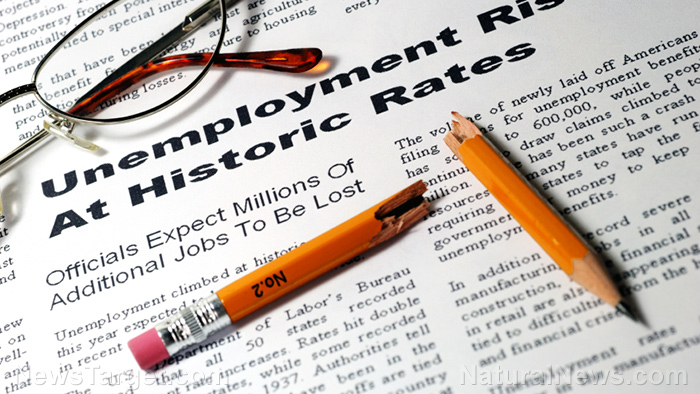Welcome to the Third World, part 31: California makes its case for a bailout
07/27/2020 / By News Editors

Just a few months ago, California was running surpluses and spreading the wealth around — at least to its affluent voters and public sector employees — as if the good times were here to stay.
(Article by John Rubino republished from DollarCollapse.com)
Fast forward to the present and it’s all over. Tech stock IPOs – a huge source of capital gains tax revenue for the home of Silicon Valley – have evaporated. Those “unicorn” companies – not yet public but worth over a billion dollars each – are doing “down rounds” that value them as the risky start-ups most of them are. The formerly booming housing market has ground to a halt. And thousands of service industry businesses like restaurants and nightclubs have closed permanently.
But the state government still has to pretend to balance its books, so now comes the tragicomedy of negotiations between the governor and state legislators over where to find the needed $50+ billion. Here’s how the Associated Press covers it in an article bafflingly titled California lawmakers agree to close $54.3 billion budget gap:
SACRAMENTO, Calif. (AP) — California’s Legislative leaders on Wednesday rejected billions of dollars in budget cuts to public schools and health care services that Gov. Gavin Newsom had proposed, setting up a fight with the governor over how to close the state’s estimated $54.3 billion budget deficit.
Flush with cash just six months ago, California’s revenues have plummeted since March after Newsom ordered everyone to stay home to slow the spread of the coronavirus. Since then, more than 5 million people have filed for unemployment benefits.
Newsom, a Democrat, and the state’s Democratic-dominated Legislature have pleaded with Congress to send the state more money to help cover that shortfall — so far without success. Last month, Newsom proposed a new spending plan that would cut billions from public schools and eliminate some health benefits for people unless Congress sent the state more money by July 1.
But the 2020-2021 budget plan legislative leaders announced Wednesday rejected those cuts. Instead of cutting money for public schools, lawmakers agreed to delay $9 billion in payments to districts. That would give school districts permission to go ahead and spend the money and have the state pay them back in a future budget year. The state has done this before during previous recessions, but never this much at one time.
Newsom’s plan also would have saved money by eliminating some health benefits for low-income adults and children and making fewer older adults eligible for government-funded health insurance. The Legislature rejected those cuts because they think Newsom overestimated by about $4 billion how much it will cost to pay for the state’s health insurance programs.
Still, much of the budget proposal is just a guess. In a normal year, most Californians would have filed their state tax returns by now, giving lawmakers a good idea of how much money they have to spend. But because of the coronavirus, the state delayed the tax filing deadline until July 15.
That’s why Assembly Speaker Anthony Rendon said “all the budget plans being discussed acknowledge the possibility that more difficult cuts will be necessary.”
Lawmakers must approve an operating budget by June 15. If they don’t, the state constitution says they don’t get paid.
But whatever the Legislature passes, the governor has the authority to either sign it into law or veto all or parts of it. Legislative leaders will negotiate with Newsom over the next few days, which could lead to changes.
Newsom’s budget is prepared by the California Department of Finance. Wednesday, spokesman H.D. Palmer called the legislative plan “progress” and said both sides will continue their discussions to reach an agreement that balances the budget while “advancing our efforts for federal support to maintain core services.”
Comments from legislative leaders suggest they won’t bend on the cuts to education and other programs.
“Our economy has been pummeled by COVID-19, but thanks to a decade of pragmatic budgeting, we can avoid draconian cuts to education and critical programs, or broad middle-class tax increases,” said Senate President Pro Tem Toni Atkins, of San Diego.
The legislative plan announced Wednesday also would:
— Reject Newsom’s proposal to slash $119 million from a program that helps keep 45,000 people out of nursing homes.
— Offer government-funded health insurance to low-income adults 65 and older who are living in the country illegally, but not until 2022.
— Expand the state’s earned income tax credit to immigrants with at least one child age 6 or younger.
— Close two state prisons “with legislative guidance.”
— Give $350 million to local government to pay for homeless services.
Notice a couple of things:
— Pensions, by far the biggest cost for a profligate state like California, are not just uncut, but unmentioned. Right there you know that this is not a serious effort.
— Instead of accepting some of the governor’s proposed spending cuts, the legislature increased spending on a bunch of things and “paid” for it like this: “Instead of cutting money for public schools, lawmakers agreed to delay $9 billion in payments to districts. That would give school districts permission to go ahead and spend the money and have the state pay them back in a future budget year.”
It’s clear that the needed cuts are political poison and will therefore never happen. Which makes these negotiations a charade designed to frame the state’s coming request demand for an epic federal bailout.
The country is thus left with two alternatives:
1) Have states like California cut services to the point where very little education, healthcare or public safety is actually provided, leaving such places looking a lot like today’s Venezuela. Or…
2) Have the federal government create several trillion more dollars out of thin air and hand them more-or-less directly to public sector pensioners with no real benefit for public services – which, given the likely impact on national finances and, yes, the value of the dollar – might leave the entire US looking like today’s Venezuela.
Either way, the descent from the illusion of prosperity to the reality of bankruptcy continues.
Click here for the other articles in this series.
Read more at: DollarCollapse.com
Tagged Under: bailout, California, Collapse, economy, finance, government, money, politics, risk, Silicon Valley, Third World
RECENT NEWS & ARTICLES
COPYRIGHT © 2017 BUBBLE NEWS




















